Driving Progress: The Role of Gender Equality Across the SDGs at HLPF 2024
Gender equality is not only a fundamental human right but also a cornerstone for building a peaceful, prosperous, and sustainable world. Despite notable global progress, the urgency to advance gender equality remains critical. As we approach the 12th session of the High-Level Political Forum (HLPF) in July 2024, with its theme, “Reinforcing the 2030 Agenda for Sustainable Development and eradicating poverty in times of multiple crises: The effective delivery of sustainable, resilient and innovative solutions,” it is imperative to integrate gender equality into all aspects of sustainable development. Considering gender equality during the HLPF is essential to ensure no one is left behind and to effectively tackle global challenges.
How does gender equality affect the whole SDG framework?
Gender equality is a vital enabler and accelerator for achieving all the Sustainable Development Goals (SDGs). While SDG 5 specifically focuses on gender equality, the interconnections between gender equality and other SDGs are profound. Our research found that almost three quarters (74%) of the SDG targets are significantly influenced by gender equality and almost half (47%) of targets are directly and inherently related to the achievement of gender equality. Not only does action on gender equality accelerate progress for the other targets, but for many of them, action on gender equality is critical to their achievement.
The HLPF’s role in monitoring SDGs 1 (No Poverty), 2 (Zero Hunger), 13 (Climate Action), 16 (Peace, Justice, and Strong Institutions), and 17 (Partnerships for the Goals) must acknowledge the significance of advancing gender equality and integrate a gender-sensitive approach to ensure comprehensive progress. This integration is essential because gender-neutral policies often fail to address the specific needs and contributions of women, and as a result leave them behind.
So, how does gender equality intersect with each of these focus goals?
Poverty eradication starts with women – SDG 1
Promoting women’s economic empowerment is crucial for poverty eradication. Research shows that increasing women’s access to financial resources not only lifts them out of poverty but also has a positive ripple effect on the entire household, improving education, nutrition, and health outcomes for children. In many societies, women are primary caregivers, and their economic stability directly impacts the well-being of their families.
We cannot eradicate poverty, without eradicating gender inequality. Discriminatory policies and legal frameworks are at the root of women’s poverty as they restrict access to employment, income and inheritance, and land and property rights. In 2023, over a third of economies (69) had laws constraining women’s decision to work, and 43 didn’t have any laws on sexual harassment in the workplace. We must reform these laws (and follow through with implementation) to secure women’s rights and alleviate poverty, achieving SDG 1.
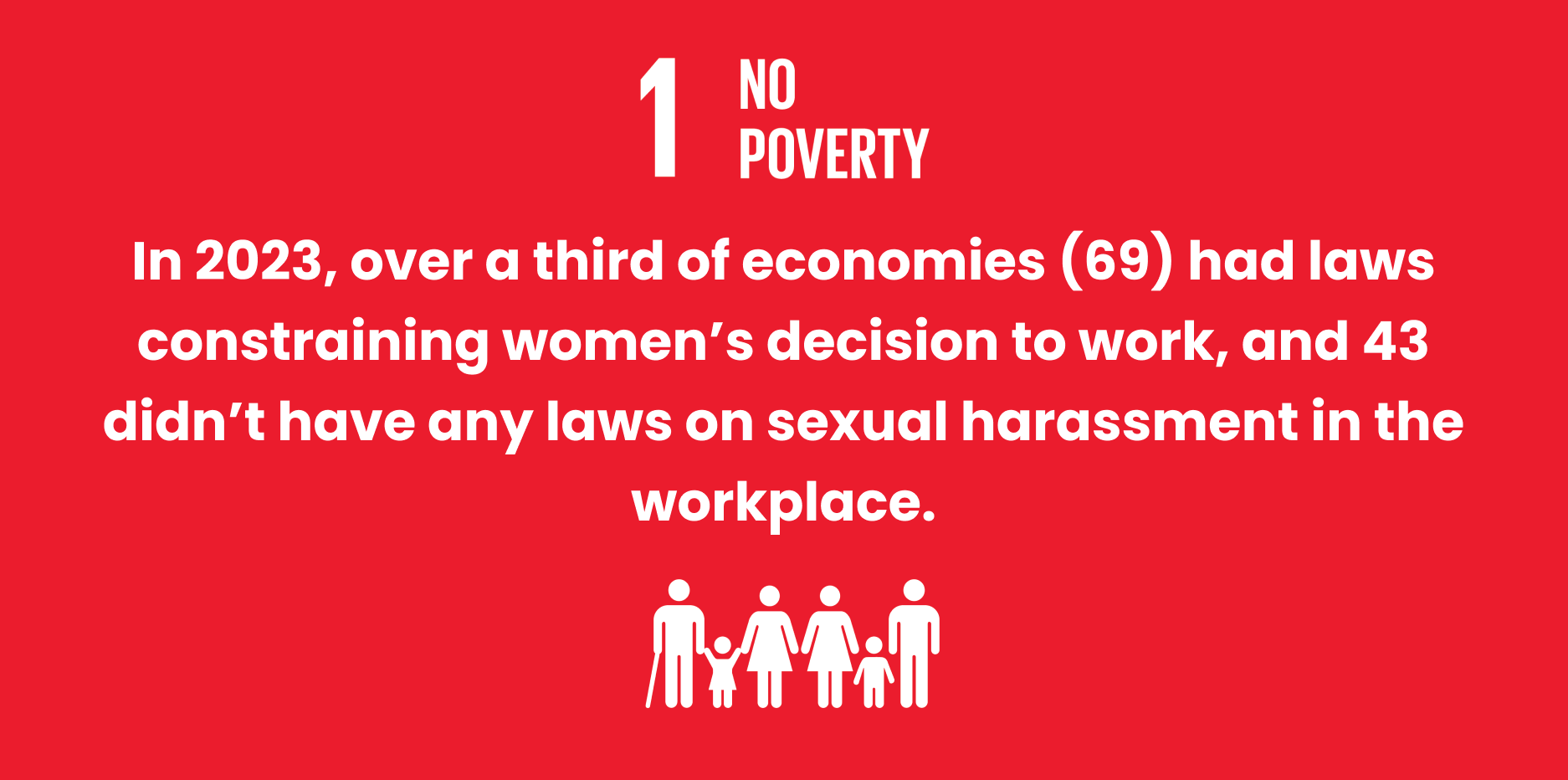
Feeding the world: women at the heart of agriculture – SDG 2
Women play a critical role in food production, processing, and distribution, making their participation essential to achieving the agricultural productivity and nutrition targets of SDG 2. In times of food crises, women often prioritize their families’ needs over their own, highlighting their vulnerability and the need for targeted interventions. Ensuring women’s full and effective participation in agricultural decision-making can significantly enhance food security and nutritional outcomes. Over 1 billion girls and women today live in countries with poor scores on SDG 2, and if current trends continue, this number could nearly double by 2030.
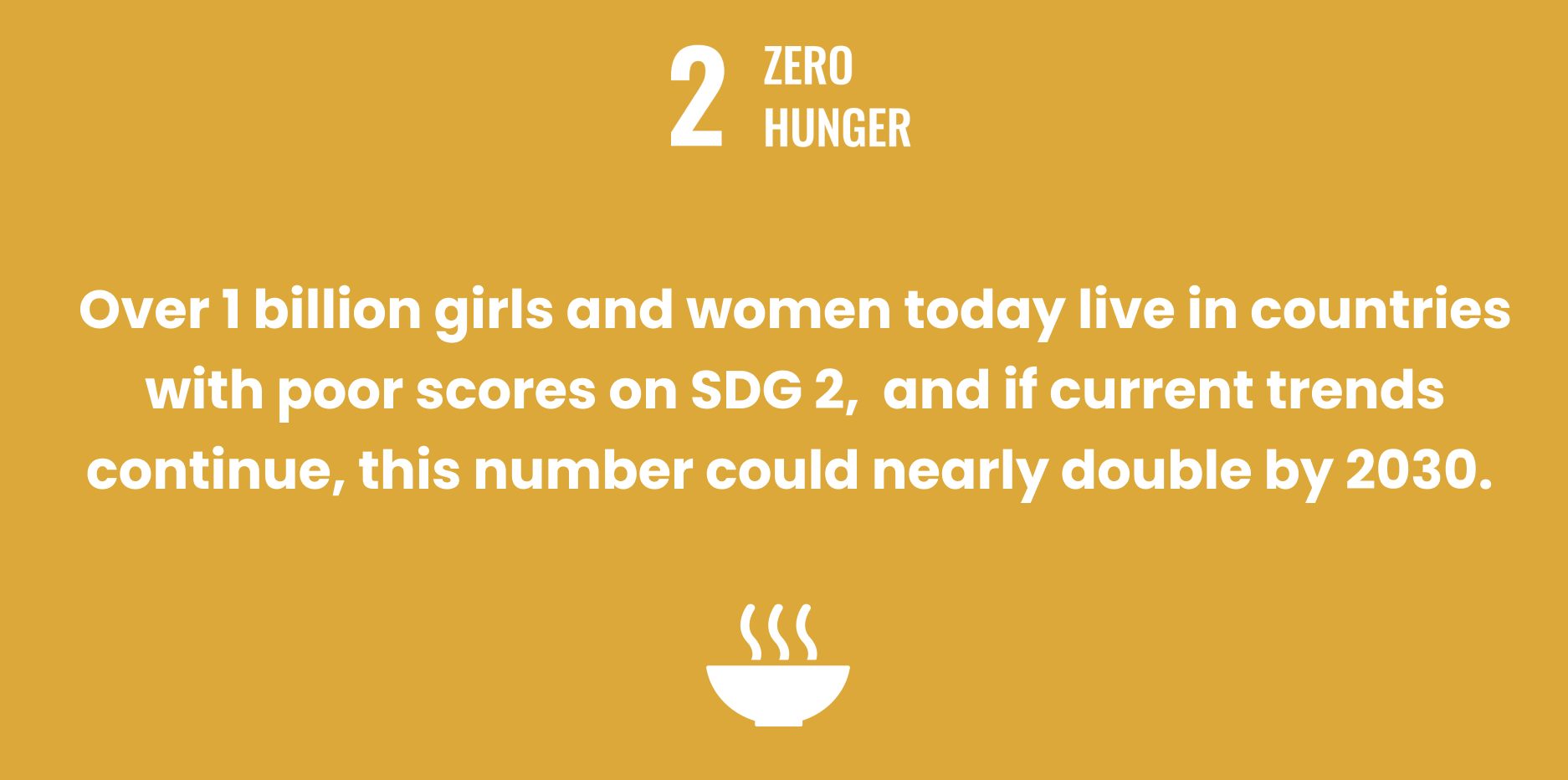
Women leading the charge on climate action – SDG 13
Women’s inclusion in climate change planning and management is vital for effective climate action. Gender equality contributes to better outcomes in climate-related projects and policies, as women’s unique experiences and knowledge can drive more comprehensive and sustainable solutions. Women are often on the front lines of climate change impacts, and their leadership is crucial in crafting resilient and adaptive strategies.
More than 400 million women work in agriculture, producing the majority of the world’s food and are often more vulnerable to climate change impacts due to their reliance on natural resources for their livelihoods. Securing women’s land rights can significantly mitigate climate vulnerability by providing them with greater control over resources and enhancing their resilience to climate impacts. This was highlighted during COP27 discussions, emphasising the need to address land rights to improve both mitigation of and adaptation to the climate crisis, thus reducing inequalities and bolstering gender equality.
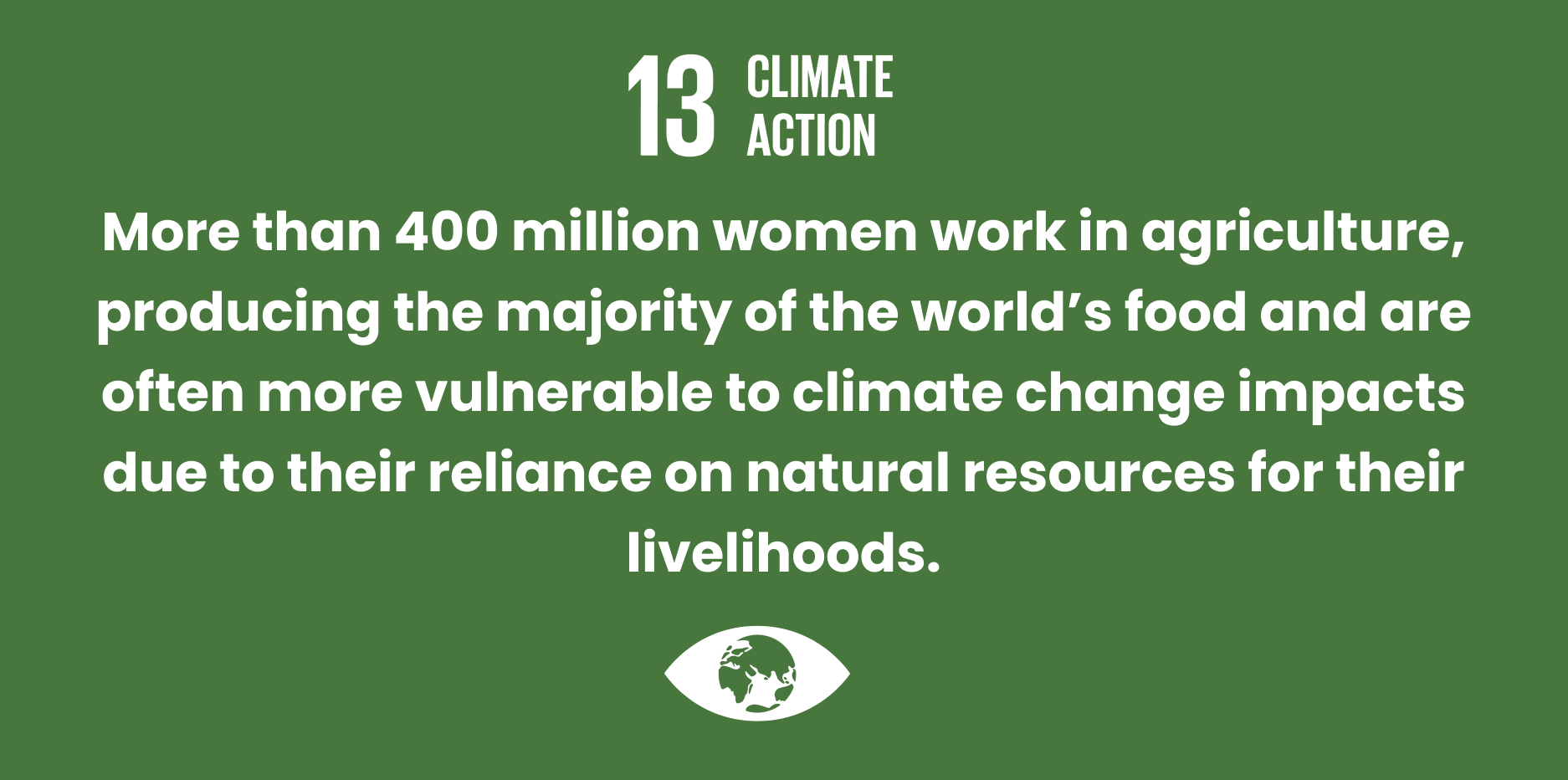
Building peaceful societies – SDG 16
Ending violence against women and girls is a fundamental step towards achieving peaceful and inclusive societies. Women’s full participation in leadership and decision-making processes is crucial for conflict prevention and peacebuilding. Their participation in peace processes increases the durability and implementation of agreements, making them 35% more likely to last at least 15 years. Despite this 7 out of 10 peace agreements signed between 1995 and 2019 didn’t include any women mediators or signatories. This led to 4 out 5 peace agreements during that period making no reference at all to women, girls and gender, and just 6% containing at least one provision to specifically address violence against women. Protecting women’s rights and ensuring their active involvement in governance and justice systems is crucial to building more stable and just societies.
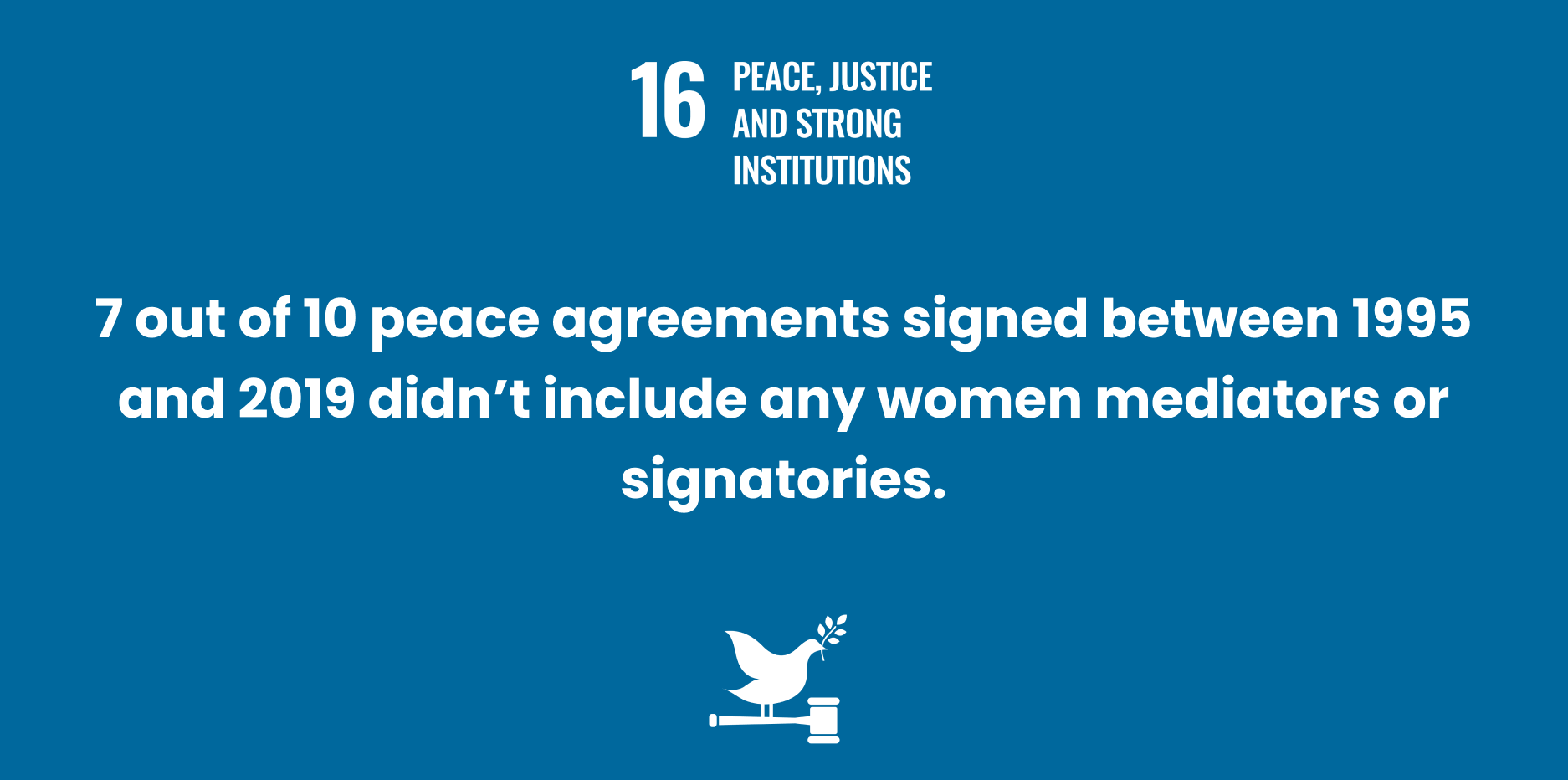
Stronger together – SDG 17
SDG 17 focuses on strengthening global partnerships, mobilising resources and enhancing capacities to achieve sustainable development. This goal is key to supporting the achievement of the other goals, but it’s crucial that this is done with a gender lens. Development assistance is increasingly coming in the form of loans and increasing the debt burdens of many countries, which, leading to cuts in public spending, and hitting women and other marginalised genders hardest.
We’re simultaneously seeing cuts to the amount of Overseas Development Aid specifically targeting gender equality and the amount of funding reaching women’s rights movements. Women’s rights movements and feminist civil society organisations are doing critical work to advance each of the goals and ensure no-one is left behind but they’re severely underfunded. To advance gender equality across all of the goals and support SDG 17, we must increase funding for these movements and organisations and their inclusion in decision-making spaces. As we’ve seen throughout the other goals, the participation and knowledge of women and girls is critical to ensure we tailor our efforts and avoid leaving anyone behind. To continue advancing gender equality and SDG 17, we must develop stronger partnerships between feminist civil society, governments and the private sector, ensuring that feminist civil society are heard and resourced, and we must commit to mainstreaming gender equality across all of the goals, how we finance them and how we monitor their success.
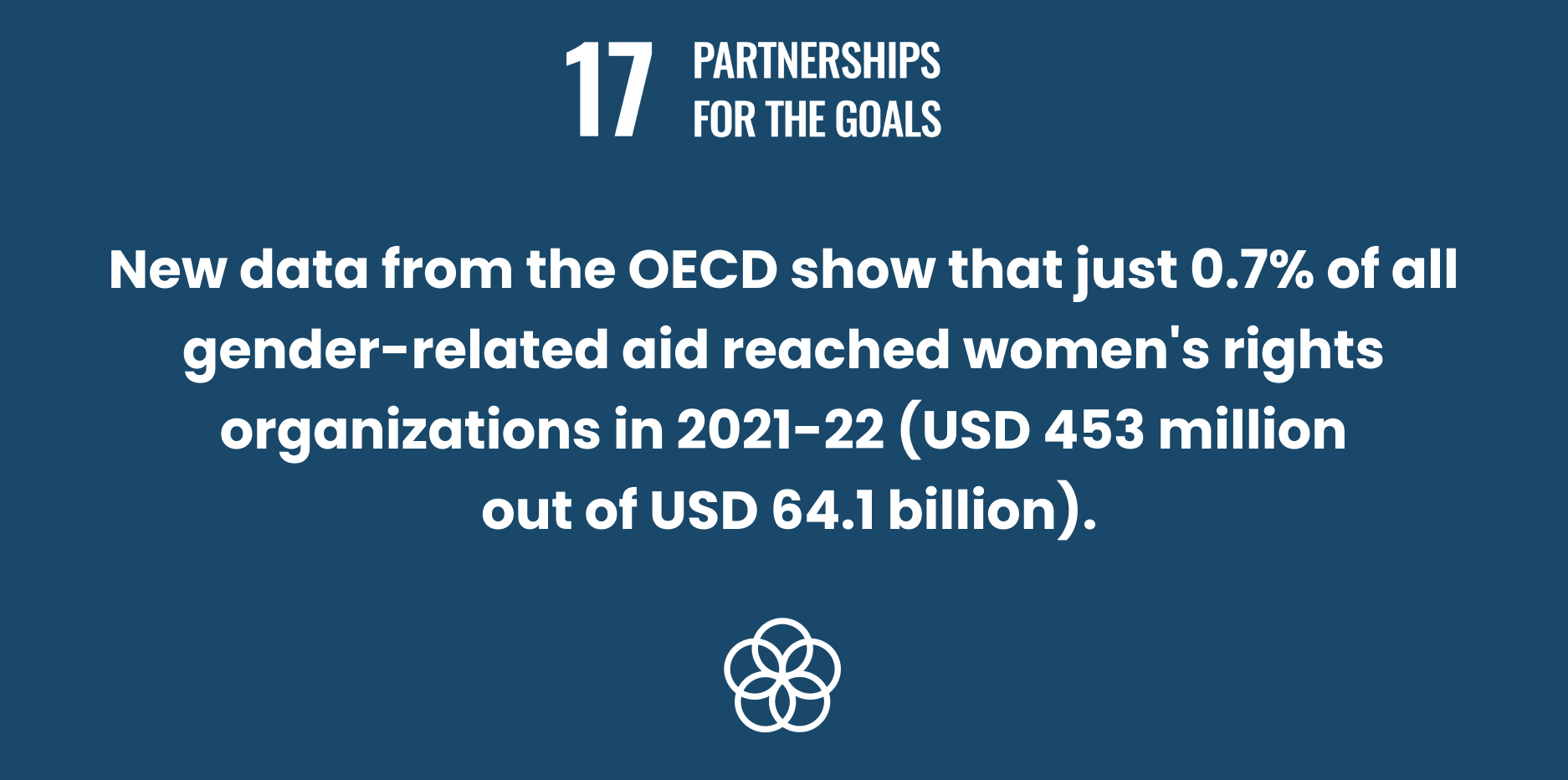
Moving forward we need to prioritize gender equality
The current HLPF session presents a pivotal opportunity to reinforce the importance of gender equality across the 2030 Agenda. By adopting a gender-sensitive approach to monitoring and implementing the SDGs, we can accelerate progress towards a sustainable and equitable world. Gender equality is not just a goal but a powerful catalyst for achieving all other SDGs, making it imperative for global leaders to prioritize and integrate gender perspectives in their policies and actions.



